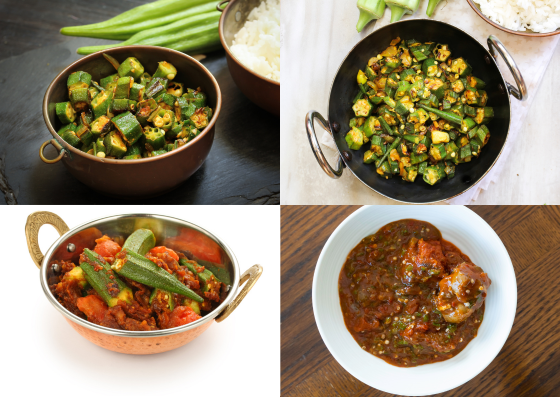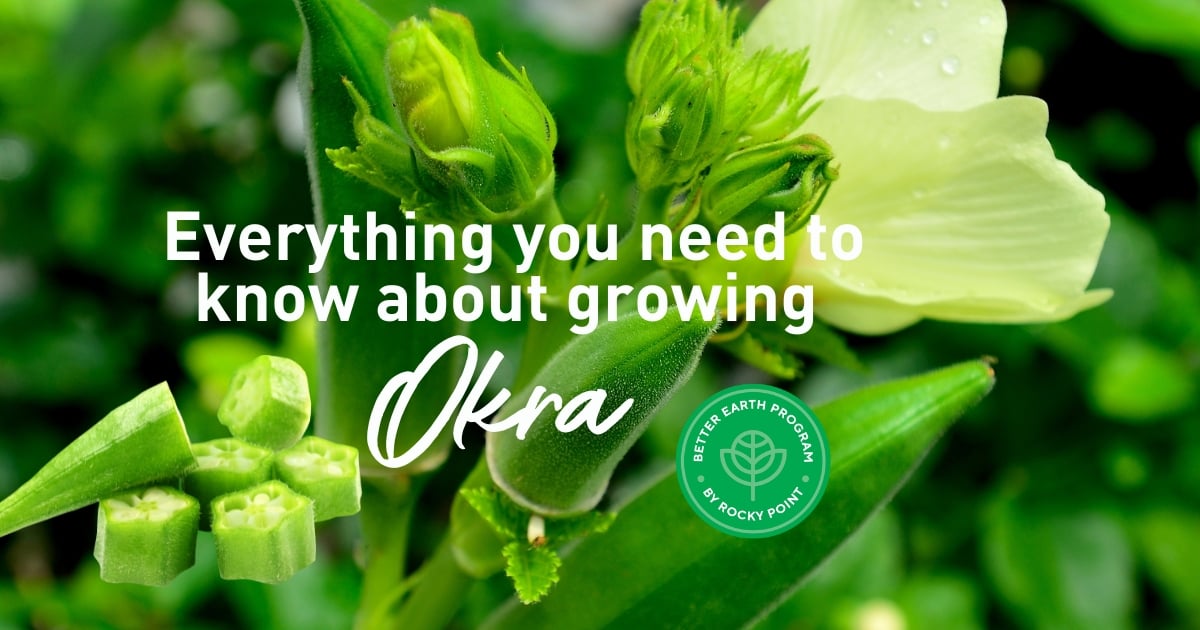Okra is also known as Abelmoschus esculentus
Fast prolific, easy-to-grow annual vegetable that comes in green and a red form. The Okra is a tropical shrub growing from 60-100cm tall.
What can you make with okra: The pods are used in stews, and soups, made into pickles, and fried individually in oil.

Variety: Choose a suitable okra variety for your region. Some popular varieties that are known to do well in Australia include Clemson Spineless and Burgundy.
More on the varieties available in Australia:
-
Clemson Spineless: As mentioned above, this is one of the most widely grown okra varieties globally and in Australian markets. It produces tender, ribbed, and spineless pods.
-
Burgundy: This variety is known for its deep red or burgundy-coloured stems and pods. The pods turn green when cooked. It's a visually striking variety.
-
Annie Oakley: A dwarf variety suitable for smaller garden spaces. It produces green, spineless pods.
-
Emerald: This variety produces dark green pods known for their tenderness and flavour. It is generally well-adapted to various climates.
-
Star of David: Known for its distinctive, star-shaped cross-section when sliced. It's a vigorous grower and produces large, green pods.
-
Perkins Long Pod: This variety produces long, slender pods that are spineless. It's well-suited for warmer climates.
-
Louisiana Green Velvet: This variety is particularly popular in the Southern United States and might be available in Australia. It produces dark green, spineless pods with a velvety texture.
-
Jambalaya: Known for its ornamental appearance, with pods of mixed green, red, and burgundy colours. It's both decorative and edible.
-
Red Velvet: Known for its stunning red stems and pods. The pods turn green when cooked. It's prized for its ornamental value.
-
Candle Fire: This is a newer variety with bright red stems and green pods. It's known for its striking appearance and good flavour.
Grow: Choose a full sun position with good airflow. Okra thrives in warm climates. It requires a long, warm growing season with plenty of sunlight. Ensure your garden receives at least 6-8 hours of direct sunlight daily.
Okra prefers well-draining soil rich in organic matter. It can tolerate a range of soil types but prefers a slightly acidic to neutral pH level (around 6.0-7.0).
Planting time: Grow from seeds or seedlings. Prefers to be grown during the warmer months or all year round in tropical regions. In cooler zones- plant after the last frost.
In Australia, okra is typically planted in spring (after the last frost) or early summer.
Starting from Seeds:
Okra seeds can be started indoors about 4-6 weeks before the last expected frost date. Alternatively, you can directly sow the seeds in the garden once the soil has warmed up.
Planting Depth:
Plant the seeds about 1 inch(2.5 cm) deep in the soil. Space them 12-18 inches (30-45cm) apart in rows with at least 3 feet between the rows.
Cultural Tips: Prepare the soil before planting by adding Rocky Point ActivGrow Soil Improver.
Apply a layer of organic mulch around the plants to help retain moisture, regulate soil temperature, and suppress weeds, try Rocky Point Sugar Cane Mulch.
Fertilising:
Fertilise regularly with side dressings of organic manure-based pelletised fertilisers, like Rocky Point Poultry Manure.
If needed, you can supplement with a balanced, slow-release fertiliser during the growing season.
Support for Tall Varieties:
Some okra varieties can grow quite tall (up to 2m). Provide support like stakes or a trellis if needed to prevent the plants from falling over.
Watering:
Okra requires consistent moisture, especially during the growing season. Water deeply but infrequently to encourage deep root growth. Water in the morning to allow the foliage to dry during the day.
Mulching:
Pruning and Thinning:
Once the plants are established, thin them to the recommended spacing if needed. Pinch off the lower branches to encourage upward growth.
Pest and Disease Management:
Keep an eye out for common pests like aphids, caterpillars, and spider mites. Insecticidal soap or neem oil can be used for control.
Practice good garden hygiene to prevent diseases. Avoid overhead watering to minimize fungal issues.
Harvesting: After the yellow hibiscus-like flower has finished the Okra seed pods will form. These are what we eat once they are mature. Pick your pods when no longer than 8-10cm, typically around 2 months after planting. Use a sharp knife or pruning shears to cut the pods from the plant.
Harvesting Tips:
Harvest regularly to encourage continuous production. Overripe okra can be tough and woody.
Be careful when harvesting to avoid damaging the plant.
Remember that growing conditions can vary, so it's essential to monitor your garden and adjust care accordingly. Additionally, local gardening resources or community groups in your area may offer specific advice tailored to your region. Happy gardening!
How much sun: Full Sun
Water: Regular
Harvest time: 10-12 weeks
Depth to plant seed: 2cm
Distance between seeds: 15 cm apart
_MEB.png?width=842&height=596&name=RP_HorizontalColour(R)_MEB.png)



